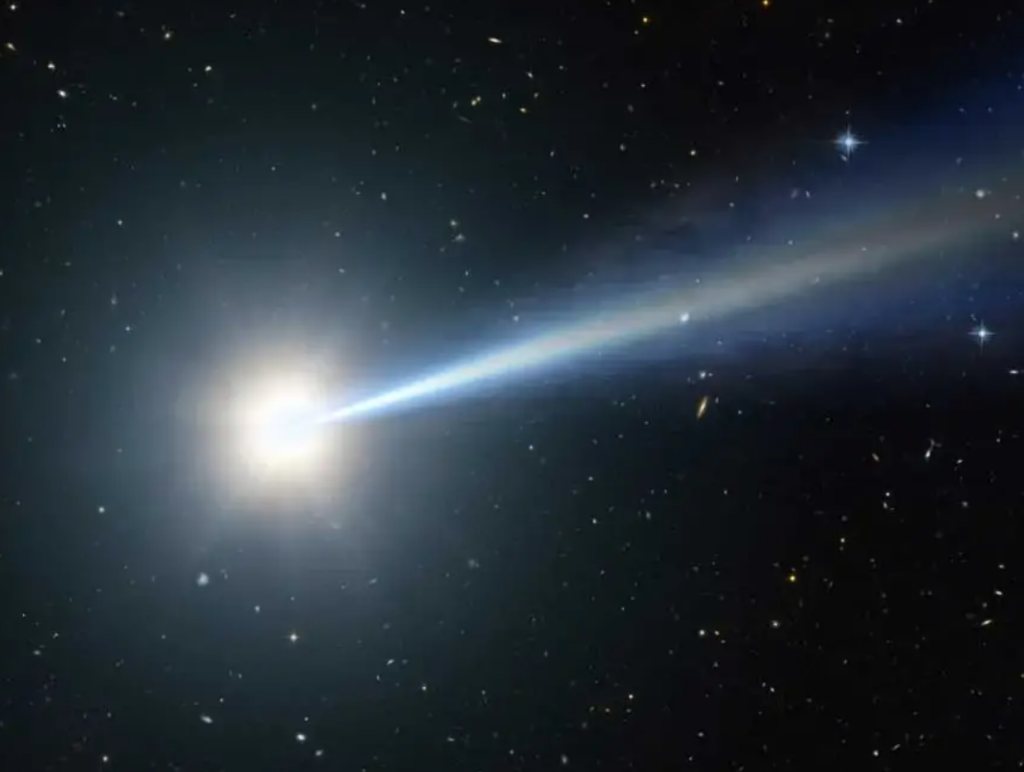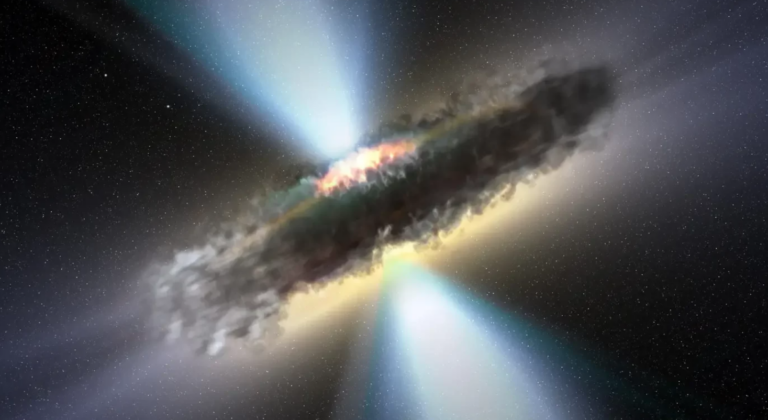Astronomers discover the universe’s largest water reservoir—holding 140 trillion times the amount of water found on Earth.
Astonishing: Massive Water Cloud Encircles Distant Quasar, 140 Trillion Times Earth’s Ocean Water Amount
Two teams of astronomers have found the largest and most distant water reservoir of the universe around a quasar named as APM 08279+5255, 12 billion light years away from the earth. This quasar which is powered by a black hole 20 billion times as massive as the Sun contains water vapor that is 140 trillion times the volume of water found in Earth’s oceans. The water is in a condition in which the gas around the black hole is being exposed to a host of X-rays as well as infrared radiation making the water warm and dense more than normally found galaxies. Several findings indicate that this quasar has as much gas supplying the black hole six times and highlighting the fact that water is ubiquitous in the universe. Read this article to discover about this astronomical find and why it matters.
Two groups of astronomers claim to have detected the largest and the most distant cache of water in the observable universe; containing 140 trillion times water than the total of sea water in the earth. This water revolves around an enormous quasar which lies beyond 12 billions of light years with an engulfing black hole.
“This quasar has something unique around it,” the scientists said, particularly, Matt Bradford from NASA’s Jet Propulsion Laboratory. This proves that water exists in plenty all across the universe including in its infancy stages.
A quasar is a brilliantly bright celestial object that is powered by an immense black hole which continuously accretes a disk of matter consisting of gas and dust. For example, APM 08279+5255 is supermassive black hole which has a mass 20 billion times the mass of our Sun and illuminates with the same amount of energy as a thousand trillion Suns.

Scientists had long predicted that water vapor would be present in the young cosmos, however they had not been able to find it at such a large distance. However, in Milky Way, the total amount of water vapor equals to 1/4,000 of the total water vapour in the quasar, as the most of water in Milky Way is in the ice form.
One of the trace gases is water vapor and as will be explained it gives out essential information regarding the quasar. In this case, the water vapor reaches a gaseous area about the black hole that ranges several hundred light years across. This proves that this quasar is illuminating the gas with X-ray and Infrared light which warms up and compresses the gas to denser state than normal intergalactic gas. However, this refrigerated gas is – 63°F ( – 53°C) and 300 trillion times rarer than our atmosphere but five times hotter and ten to hundred times denser than the galaxies of Milky way.
Analyses of the water vapour and other molecules including carbon monoxide imply that there is enough gas in the cosmic structure to sustain the black hole until it enlarges six times. Still, there is a doubt whether this will occur as a portion of the gas may be used to form stars while others will be ejected out of the quasar.
Bradford and his team started observing in 2008 with an instrument known as “Z-Spec” attached to the 10-meter Caltech Submillimeter Observatory perched high on Mauna Kea in Hawaii. Further observations were made with the Combined Array for Research in Millimeter-Wave Astronomy (CARMA), an assembly of radio dishes in the Inyo Mountains, southern California.
A second team we interviewed to provides details on the experiment was from Caltech and was led by Dariusz Lis and they employed the Plateau de Bure Interferometer which is located in the French Alps to detect water. Lis’s team came across water in quasar APM 08279+5255 in 2010 while investigating a singular spectral line only. Bradford’s team ais still able to see details which they could not otherwise obtain, such as the great quantity of water by sensing the water in multiple ways.
Do not forget to share your opinion with us to provide you with the best posts !




0 Comments